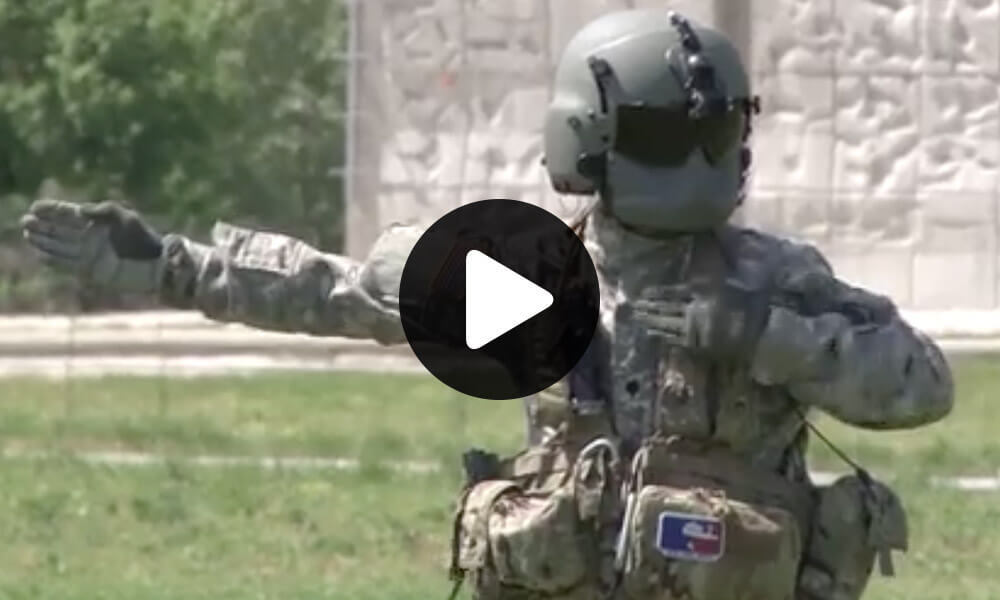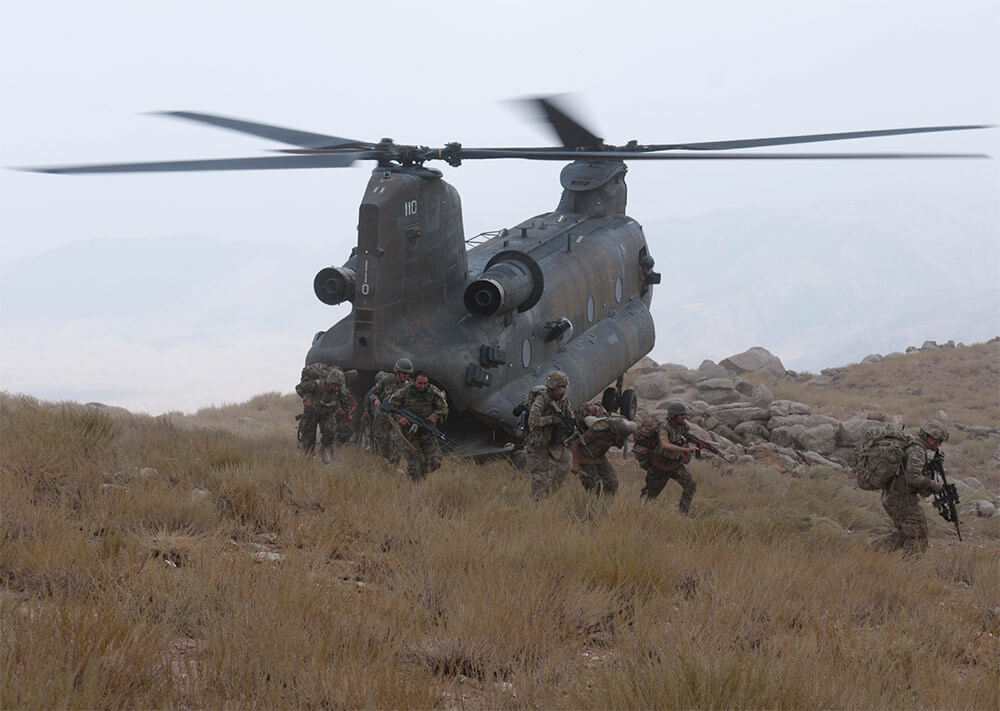Iowa Army National Guard Helps Nation of Kosovo Reach New Heights
The year 2018 marks the sixth iteration of the annual Eagle exercises in Kosovo. The two-week disaster response training is the largest exercise planned, hosted and led by the Kosovo Security Force (KSF).
The Eagle exercises serve to test soldiers’ natural disaster reaction and relief skills, emergency response skills, refugee care techniques, humanitarian aid techniques and cooperation with local authorities, organizations and international military partners.
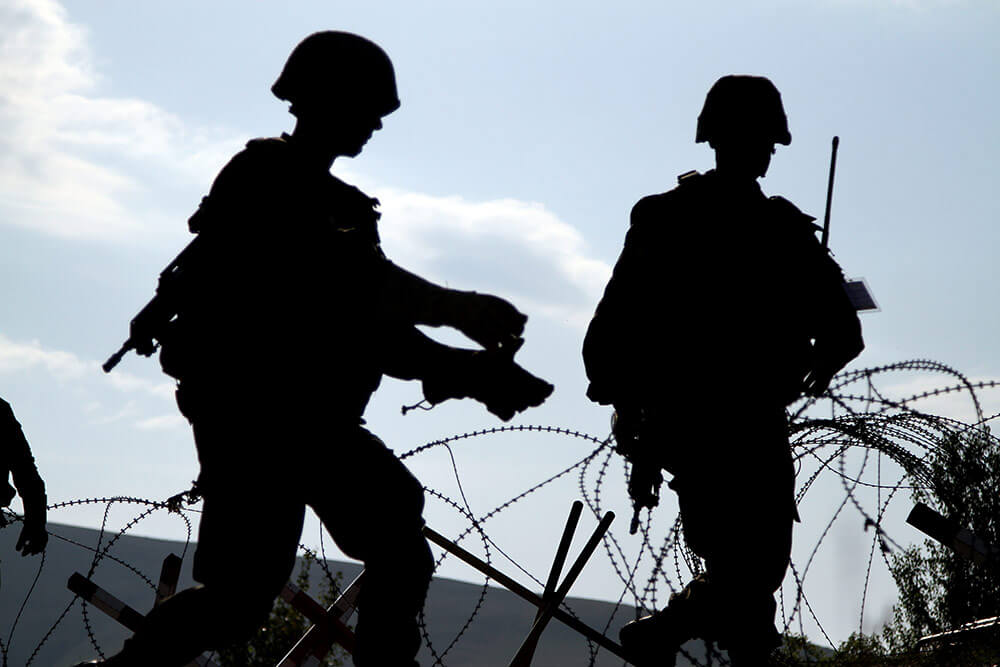
With the event growing in size and complexity each passing year, this year’s Eagle exercise – Eagle 6 – hosted more than 600 participants hailing from the United States, Albania, Croatia, Kosovo, Macedonia, Montenegro, Turkey and the United Kingdom.
The Iowa National Guard joined Eagle 6 as Kosovo’s partner through the National Guard State Partnership Program (SPP). Thirty-five Soldiers from Iowa Army National Guard’s 831st Engineer Company and 18 Airmen from Iowa Air National Guard’s 132nd and 185th Medical Groups took part in this year’s event.
The Iowa Guard members functioned as subject matter experts working as observers and mentors during the training.
“Participating in this exercise is an incredible opportunity for us as international partners to train our forces in a combined, joint and global environment,” said Iowa National Guard Vice Chief of Joint Staff COL Justin Wagner.
This year’s training scenario centered on a fictional flooding disaster near Pristina, Kosovo’s capital and largest city, which encompasses two major lakes.
“[In the scenario], there were some isolated families that lived in the area. Soldiers had to find them and get them out to safety,” explained SGM Dan Cain with the Iowa National Guard Joint Force Headquarters. “They also had to find some missing children, one of whom was injured, [and soldiers had to demonstrate the procedure to] air medevac the child out.”
SGM Cain went on to describe how the participants additionally had to find a barrel, containing a hypothetical toxic substance that was lost in the lake. As the lake is the primary water source for that region, a real event of this nature would have been a very sensitive issue, he said.
The Eagle 6 training also included a scenario requiring the neutralization of armed terrorists. The simulated terrorist cells used the distraction of the flooding as an opportunity to infiltrate the area and attempt to damage the city’s levies, which would cause even more flooding and potentially inflict more harm on the local residents.
According to SGM Cain, the KSF soldiers have improved their proficiency in disaster response training over the course of the Eagle exercises.
Kosovo is a young country, having broken with Serbia in 2008, which itself was formerly part of the nation of Yugoslavia that broke up in the early 1990s, at the end of the Cold War. The Eagle exercises have a dual benefit for the KSF, as the events not only serve to enhance the readiness of all participating groups, but they also afford the KSF with NATO-affiliated expertise from around the world as the nation works to field a more capable military force.
Brig. Gen. Naim Haziri, KSF director of the Eagle 6 exercise, noted the significance of the joint training environment.
“We are exercising together with [our] local agencies and our international partners in order to intervene together in real operations throughout Kosovo or elsewhere,” he said.
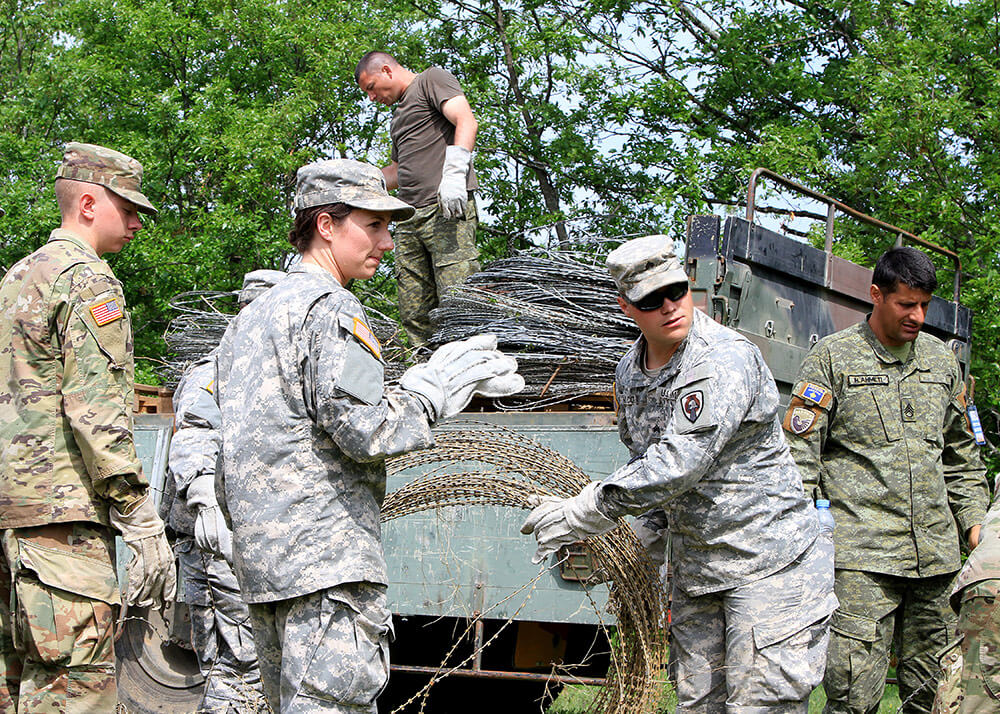
As mentors and advisors, the participating Iowa National Guard members worked with their Kosovar counterparts using KSF doctrine and KSF training-evaluation outlines when observing the Kosovar soldiers and evaluating them against the standard. The challenge in evaluating the KSF members was that, first, KSF doctrine is still in the process of being developed, and second, translations of the existing portion have yet to be made.
“It’s a work in progress,” SGM Cain stated. “[What doctrine they do have] is in Albanian. We had interpreters, but the language barrier was a big issue. We could try to mentor them, but it was very difficult to hold them to their standard.”
One protocol the U.S. Soldiers noted as having room for improvement was the KSF soldier’s tendency to take multiple breaks between tasks. This was an example of an area where mentoring from the Iowa Guard Soldiers was key.
In spite of the challenges, the Iowa units were able to help the KSF members establish a baseline from which they can continue to grow.
In addition to disaster response training, KSF soldiers also focused on building skills and elements that would aid the force in fulfilling NATO certification requirements. These elements include a forward operating base (FOB), which KSF soldiers were actively building while the Eagle 6 exercises were underway.
2LT Sebastian Paradise, platoon leader of the 2nd Platoon, 831st Engineer Company, said his unit supported the KSF engineers as they constructed their new FOB. That work included creating roads, putting up fences, establishing proper site drainage and conducting technical recon for the site.
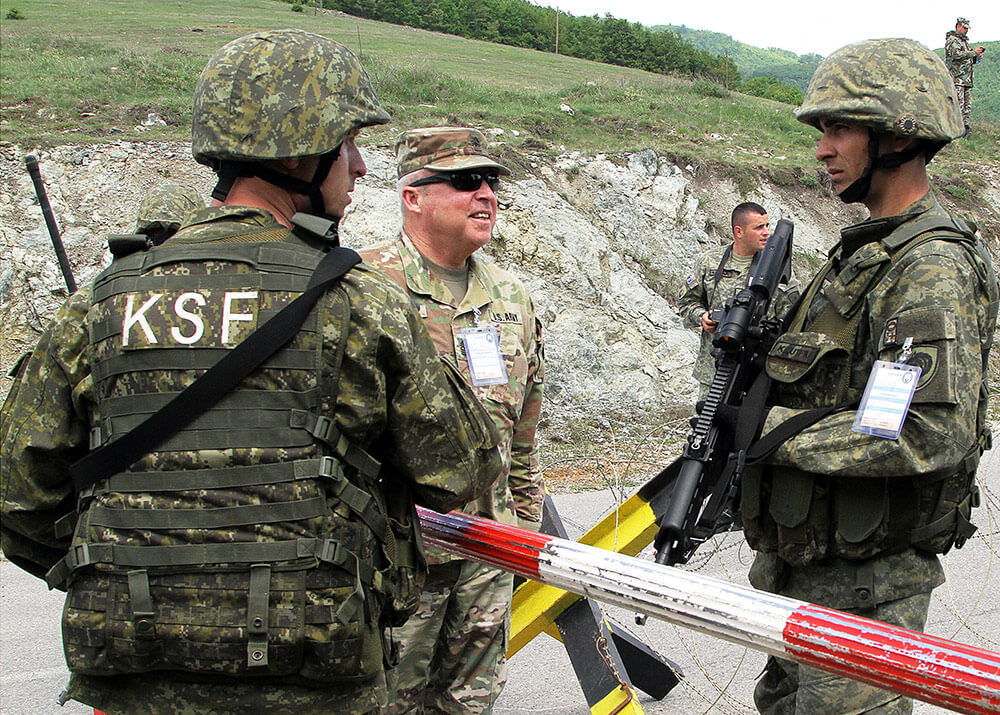
“We went with them on the recon just to provide more expertise,” 2LT Paradise said. “When you’re moving excavators, they can get up there in height. There are a lot of sharp turns and some areas where the roads were a little rougher. You have to be cognizant of all that. At one point, we knew there were going to be some low-hanging wires that [the KSF soldiers] weren’t going to be able to make it under, but they figured out how to get around those obstacles.”
In creating roads, the engineers took what were basically crude paths and turned them into paved roads. 2LT Paradise said the paths were cleared of muddy buildup and stone was laid down. In addition to helping with traction and stability, the stone will also serve to provide proper drainage for the new road.
“It’s really important because we have the medical tents farther down the road,” 2LT Paradise explained. “If we do have a real-life scenario where we need a medevac, we now didn’t have to worry about the vehicles getting stuck somewhere and not being able to [transport] the patients.”
The Iowa Soldiers also helped the KSF members add concertina wire to the base’s perimeter, establish a control point for the front gate and build fortified fighting positions using sandbags.
The work was substantial, but fairly straightforward and the soldiers from the two forces – leveraging experiences with one another based on past SPP events – worked well together.
Even the common issue of language barrier, which plagues most multinational training events, was lessened by the troops’ familiarity with the partnering force. During the seven years Iowa and Kosovo have been State partners, KSF soldiers have traveled to Iowa for classes on prior missions, where they have been able to improve their English. In that same time, Iowa’s Soldiers have also had the opportunity to pick up a bit of Albanian during deployments to the Eastern European nation.
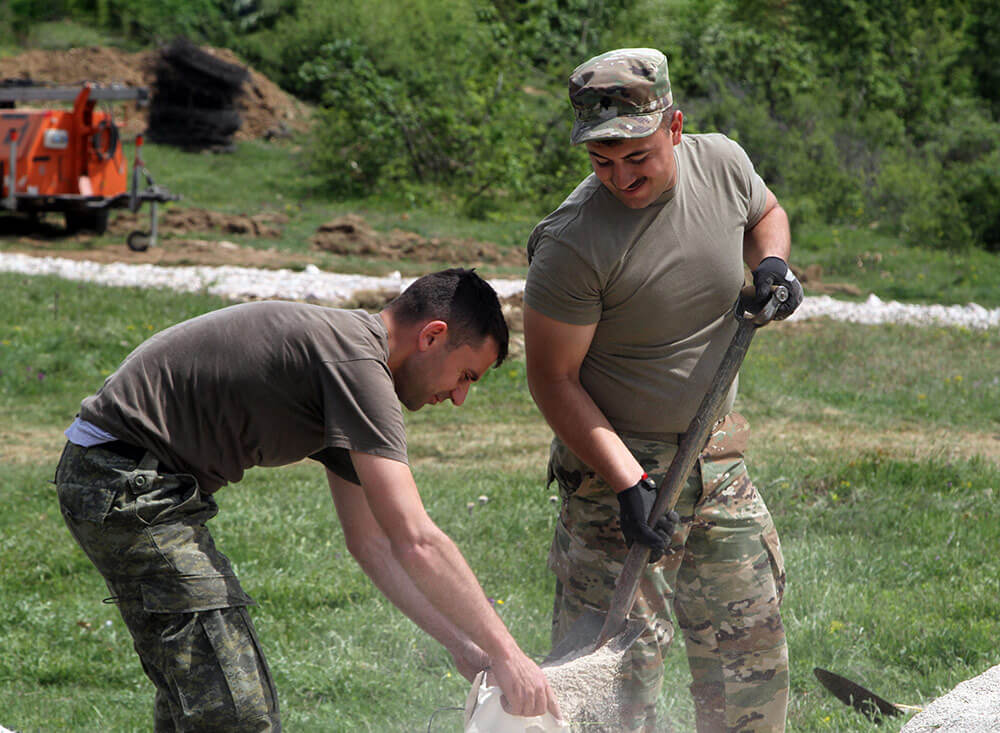
One Soldier who overcame the language barrier is SGT Briger Willcott, a heavy equipment operator with the 831st.
“When we first got there, we were setting up tents and [the KSF soldiers] kept yelling ‘cekic,’” SGT Willcott recalled. “I finally asked one of the guys, ‘What is cekic?’ He was like, ‘Oh, it means hammer.’ You just figure out little stuff here and there.”
With the help of the Iowa National Guard and other NATO countries, the KSF is expected to continue to develop its doctrine, resources and protocols.
“They really embrace Americans,” SGM Cain said. “They’re very grateful for the help that we provided to them as they fought for their independence and their sovereignty.”
SGM Cain noted the incremental progress already made by the KSF as indicative of their future advancement.
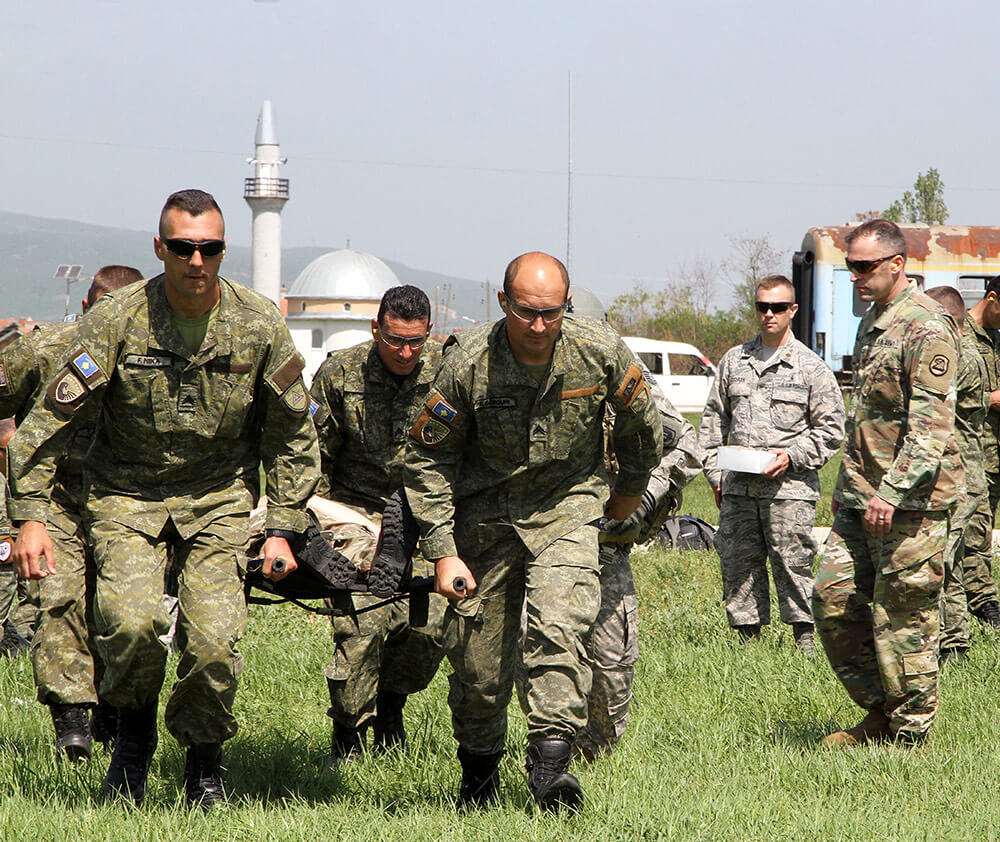
“They will be able to achieve NATO certification in the future, even if that goal might still be a little far off,” SGM Cain concluded.
2LT Paradise noted that the positive impact of the Eagle exercises – which play a part in the tactical growth of the KSF – is easily recognizable.
“The thing I enjoyed the most was being able to see how far [they’ve come],” he said. “You could see the changes they have implemented based on AAR [after action report] comments from years past. The growth was incredible to see. It’s a willingness and it’s almost palpable. You can see it. You can touch it. They want to do their best.”
During a local press conference held in Kosovo, COL Wagner summarized his thoughts about Eagle 6 this way. “I am impressed with the planning and the attention to detail with which the members of the Kosovo Security Force have approached this exercise. It is a testament to the focus they have placed on building capacity within their current mandate and developing interoperability with their [NATO, Kosovo Forces] and regional partners. This will truly benefit all the people of the region should a disaster strike.”
Sage Wisdom from a Bushmaster: SGT Morga’s Three Keys to Life in the Army National Guard
This is the “us” Army:
“We are a team and we are stronger as a team, both downrange and back home.”
The Army was here before us. The Army is here with us. And the Army will be here after us:
“Consider how we influence [others] during our time in the Army – how we leave our legacy behind with the Soldiers who carry on your leadership traits. Just because you get out, do not think you have not left a lasting impact on the uniform.”
Don’t ever think you have to fight alone:
“I would say, when you come home, know that there is someone out there who has your six 24/7, 365. You can call them up and they’ll round up a QRF [quick reaction force] and get help to you. Even people that have not been downrange are affected by post-traumatic stress in ways that are seen stateside. So when you need help, ask for it. Nobody’s going to look at you like you are weak. I tell people all the time – the strongest thing you can do is ask for help.”
BY STAFF WRITER Matthew Liptak
